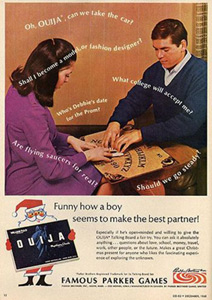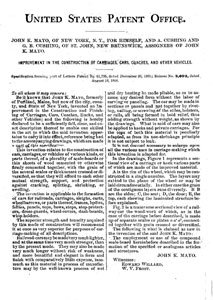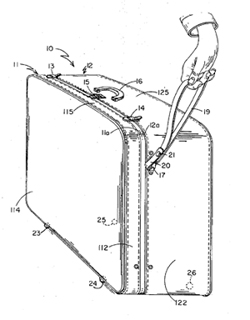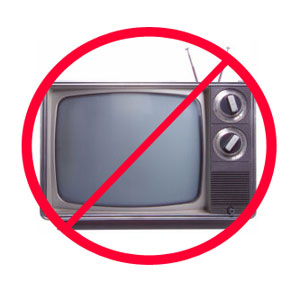 Believe it or not, there are numerous patents for the most popular device supposedly used to communicate with those in the spirit world. The device wasn’t really invented by any of the patent holders, instead it was refined. A Ouija board is used by putting your fingertips on the planchette or indicator and allowing the spirits to guide the planchette around the board. This idea was not new to the Ouija board. “Automatic writing” which was practiced by the ancient Chinese was a process of producing writing utilizing a planchette. Supposedly, the hands of the writer were guided by forces beyond themselves.
Believe it or not, there are numerous patents for the most popular device supposedly used to communicate with those in the spirit world. The device wasn’t really invented by any of the patent holders, instead it was refined. A Ouija board is used by putting your fingertips on the planchette or indicator and allowing the spirits to guide the planchette around the board. This idea was not new to the Ouija board. “Automatic writing” which was practiced by the ancient Chinese was a process of producing writing utilizing a planchette. Supposedly, the hands of the writer were guided by forces beyond themselves.
In the mid-nineteenth century, spiritualist were everywhere. Spiritualists began holding seances and looking for ways to communicate with the dead. The talking board was among the ways people were attempting to talk with spirits. The first patent for one these talking boards was granted to Adolphus Theodore Wagner, on January 23, 1854 in London, England. Continue reading “Answer to Your Questions? – Ouija Board Patent”


 What was the greatest thing since before sliced bread? Why burnt toast, of course!
What was the greatest thing since before sliced bread? Why burnt toast, of course!
 Although plywood is considered a modern building material, its origin can be traced to ancient times. Remnants of plywood have been found in Ancient Egyptian tombs. There was a shortage of fine wood in Egypt. In order to save the higher quality wood for the exterior of furniture and other decorative products, the Egyptians glued thin sheets of the high quality wood to the lower quality more available wood. Ancient Chinese were known to use a similar technique for furniture. In the 1600 and 1700’s, the British and French experimented with different types of plywood.
Although plywood is considered a modern building material, its origin can be traced to ancient times. Remnants of plywood have been found in Ancient Egyptian tombs. There was a shortage of fine wood in Egypt. In order to save the higher quality wood for the exterior of furniture and other decorative products, the Egyptians glued thin sheets of the high quality wood to the lower quality more available wood. Ancient Chinese were known to use a similar technique for furniture. In the 1600 and 1700’s, the British and French experimented with different types of plywood. It has only been for the last forty years that traveling did not have to mean a sore back from carrying your luggage. Before 1970, luggage had to be carried. Suitcases did not have wheels. This month, wheeled luggage celebrates its 40th anniversary. Bernard Sadow is the man who made traveling with ten pairs of shoes and enough clothes for a month much easier.
It has only been for the last forty years that traveling did not have to mean a sore back from carrying your luggage. Before 1970, luggage had to be carried. Suitcases did not have wheels. This month, wheeled luggage celebrates its 40th anniversary. Bernard Sadow is the man who made traveling with ten pairs of shoes and enough clothes for a month much easier. John Gorrie is considered the father of refrigeration and air conditioning. Gorrie’s medical research involved the study of yellow fever. At the time of his research, it was widely believed that bad air was the cause of many diseases. Gorrie also noticed that outbreaks of yellow fever were less frequent in the winter. He was convinced that cold was a healer. This led Gorrie to cool the sickrooms of his patients to reduce fever and make them more comfortable.
John Gorrie is considered the father of refrigeration and air conditioning. Gorrie’s medical research involved the study of yellow fever. At the time of his research, it was widely believed that bad air was the cause of many diseases. Gorrie also noticed that outbreaks of yellow fever were less frequent in the winter. He was convinced that cold was a healer. This led Gorrie to cool the sickrooms of his patients to reduce fever and make them more comfortable. Five technological advancements in the last decade have led to the current trends in consumer electronics. Without these advancements, we would not have iPods, digital cameras, TiVos or Blackberries as well as many other electronic devices.
Five technological advancements in the last decade have led to the current trends in consumer electronics. Without these advancements, we would not have iPods, digital cameras, TiVos or Blackberries as well as many other electronic devices.